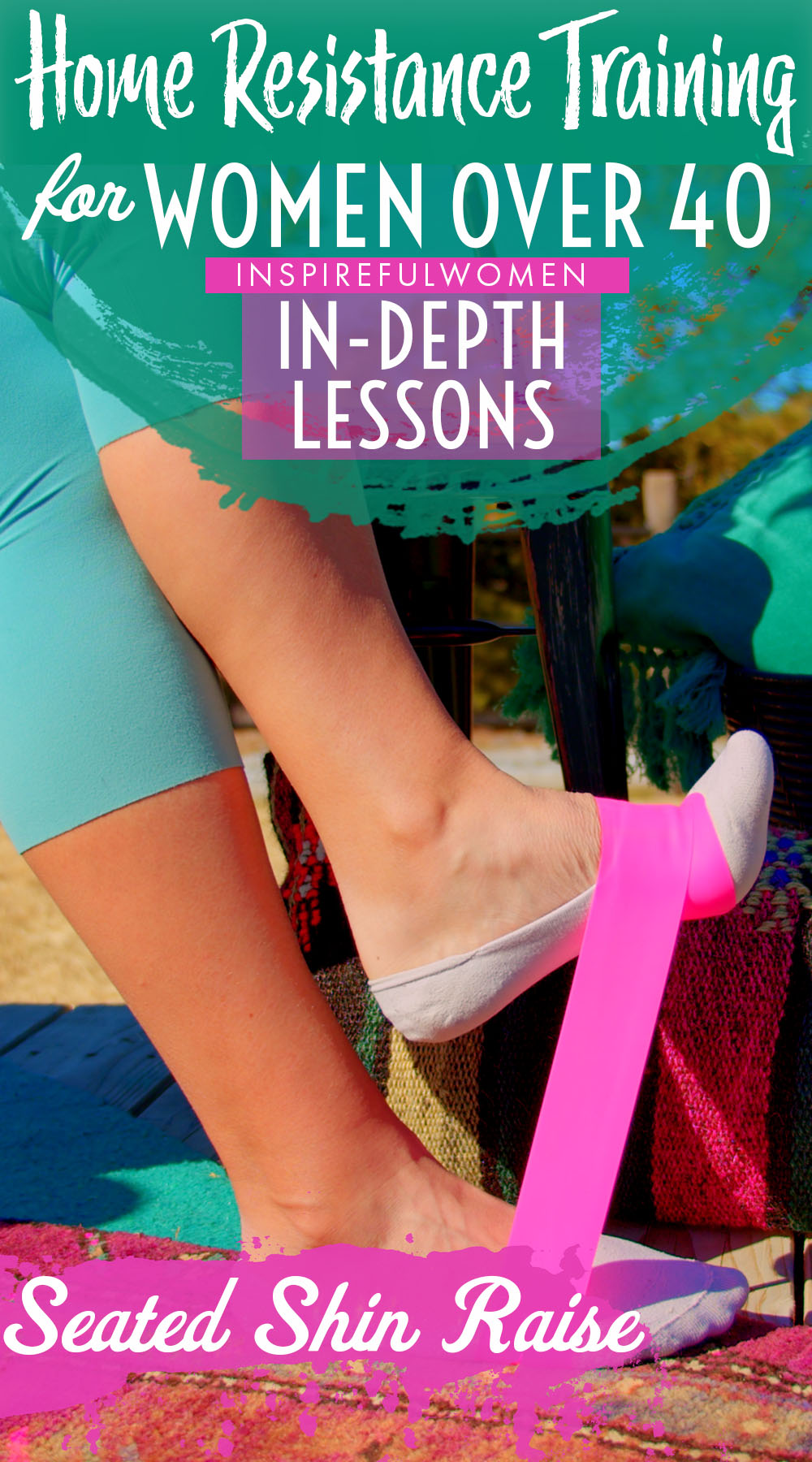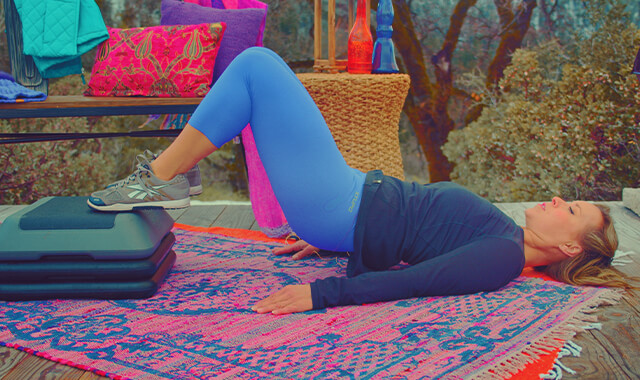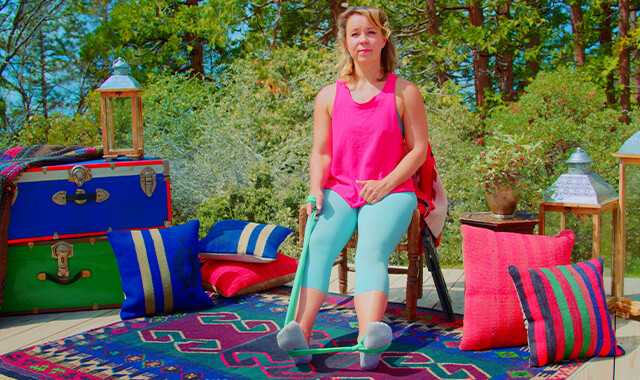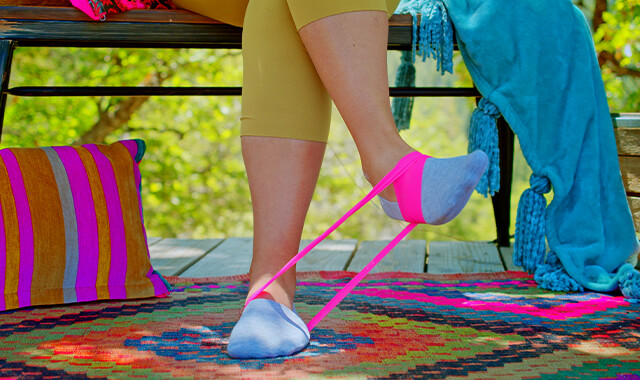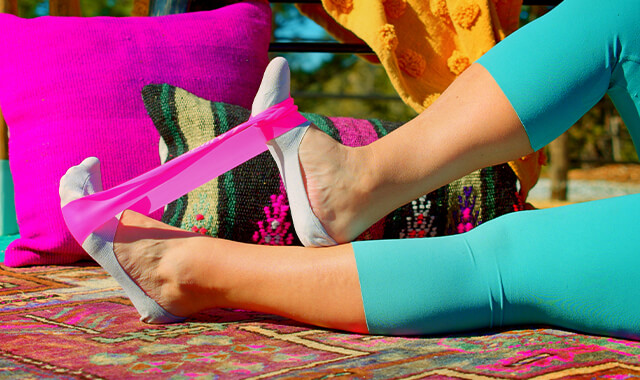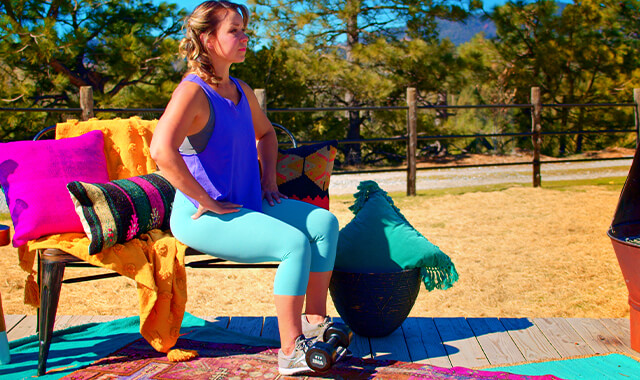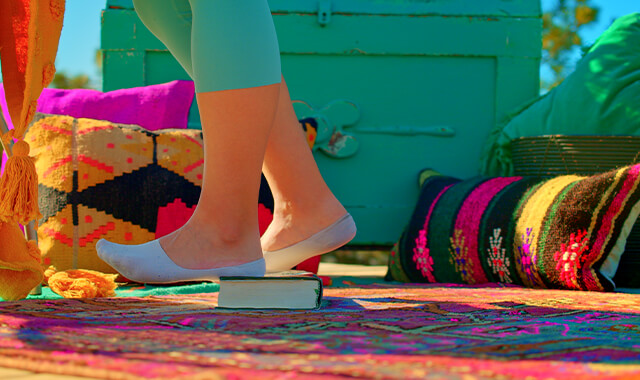Seated Mini Band Toe Raise
How to Do the Seated Mini Band Toe Raise - Shin Strengthening Exercise | In-Depth Guide [VISUAL LEARNERS] Beginner
Proper Form & Common Mistakes | Home Resistance Training
WHAT DO YOU WANT TO SEE?
QUICK DEMO
QUICK DEMO
MUSCLES THIS WORKS
MUSCLES
MAIN MUSCLES WORKED IN the Seated Mini Band Toe Raise
TIBIALIS ANTERIOR
OTHER MUSCLES WORKED:
- Extensor Digitorum Longus
- Peroneus Tertius
- Extensor Hallucis Longus
STARTING POINTERS
Starting Pointers
WHAT WE'RE DOING TODAY
Other names for this exercise: Dorsiflexion - Banded; Resisted Dorsiflexion
ALL WE'RE DOING:
Raising the top of our foot to work the shin muscles
Seated mini-band toe raise is an easy beginner exercise for targeting your shin muscles and strengthening your ankles. This version of the shin raise is done using a mini band. The mini band is looped around the nonworking foot to anchor the band, the other end is looped around the ball of the working foot. The exercise is done in a seated position, either in a chair, stool or stability ball. The working leg will be placed on top of the non-working leg so that the feet are lined up for a straight pull on the band when the toes are lifted.
The exercise is done seated so balance and stability will not be challenged. The focus of the exercise will be on strengthening the muscle. The band can be wrapped around the working foot a number of times to shorten up the band and increase the resistance.
HOW TO DO THE EXERCISE
LOOKS
HOW Seated Mini Band Toe RaiseS SHAPE OUR BODY
Tones and shapes the lower legs and ankles.
PROPER FORM
PROPER FORM: Seated Mini Band Toe Raise
EQUIPMENT, SETS & REPS
EQUIPMENT
Mini Band
The standard mini-bands are about a 12" loop- which is actually too big for a lot of exercises to be effective (I mean, they'll do, but if you can....)
These are better & you'll be less annoyed:
10" loop mini-bands
9" loop mini-bands
9" loop mini-bands
If you buy 1 set, get the 9" size. I honestly recommend getting both. They're affordable & give you a lot of versatility to find the right stretch & resistance for a variety of exercises.
If these aren't currently for sale, you will need to search specifically for 9-inch or 10-inch mini bands. If you just search mini bands all you'll ever see are the 12" ones.
Barefoot is best for this exercise.
Chair or stability ball.
SUGGESTED STARTING WEIGHT FOR WOMEN:
Moderate
SETS & REPS:
1 - 2 sets of 15 - 20 reps (or to fatigue)
PACE:
Controlled lift up - 1 second count, hold for 1 seconds, lower for 1 seconds. Or, you could slow down the movement for 10 reps - 2 seconds up, hold 2 seconds, down for 2 seconds.
BODY POSITION
BODY POSITION FOR THE Seated Mini Band Toe Raise
Seated in a chair or stability ball. Loop one end of the mini band around your non-working foot and the other end around your working foot. You may need to wrap the band around the ball of your foot at least twice to prevent it from just pulling off and to provide enough resistance.
LEGS/FEET: Non-working side - leg extended out with your heel resting on the floor. Working foot: place the heel of your working foot on the lower shin of your non-working side. Your working leg will be resting on your non-working leg. It may be more comfortable to place a towel roll under your thigh just above your knee to support the weight of your leg - you should not be actively holding your leg up. The goal is to get your working foot directly above your non-working foot so that the band is pulled straight up. Pull your toes back to help activate the right muscles, this also helps keep the band in the right place.
BODY STANCE: Sit up tall, do not lean against the back of the chair. Neutral spine (includes the cervical spine), hips and shoulders squared.
HANDS: relaxed in your lap or hanging by your sides.
HOW TO DO
HOW TO DO Seated Mini Band Toe RaiseS
CUE: The top of your foot lifts straight up. Focus on lowering your foot back to the ground very smoothly. Being able to lower your foot down smoothly is a sign of strength and good motor control.
Keep your toes lifted and pull the front of your foot up as high as you can - if calf tightness is limiting your movement then bend your knee more. Make sure that you are using your shin muscles to pull the front of your foot up. If you cannot feel/see the muscle working, lean forward and put your hand on your shin to feel them working.
Slowly and smoothly lower the front of your foot back down.
Repeat to complete your reps. Switch legs and repeat.
HOW TO SAFELY GET OUT OF THE EXERCISE
Remove the band from your foot.
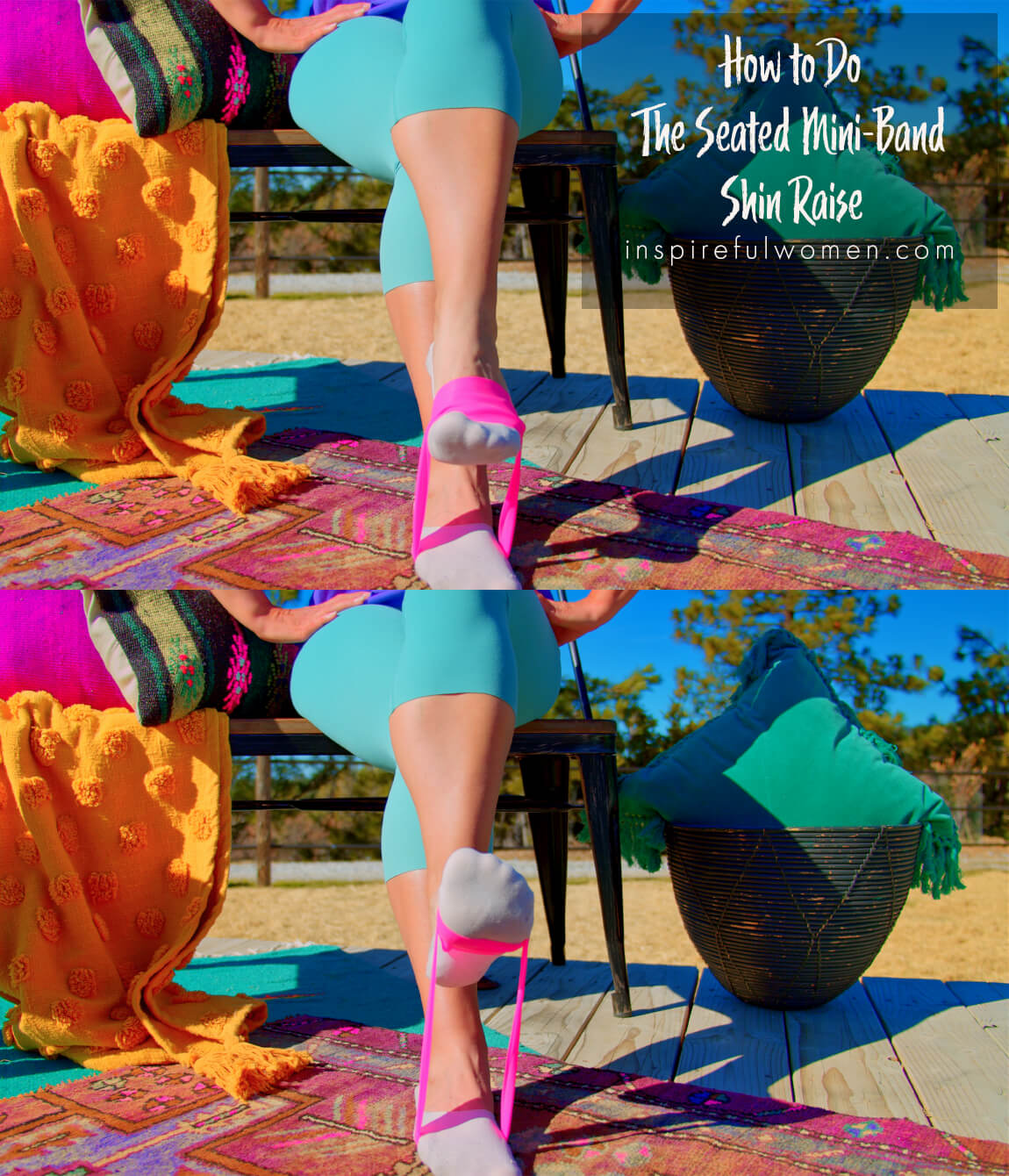
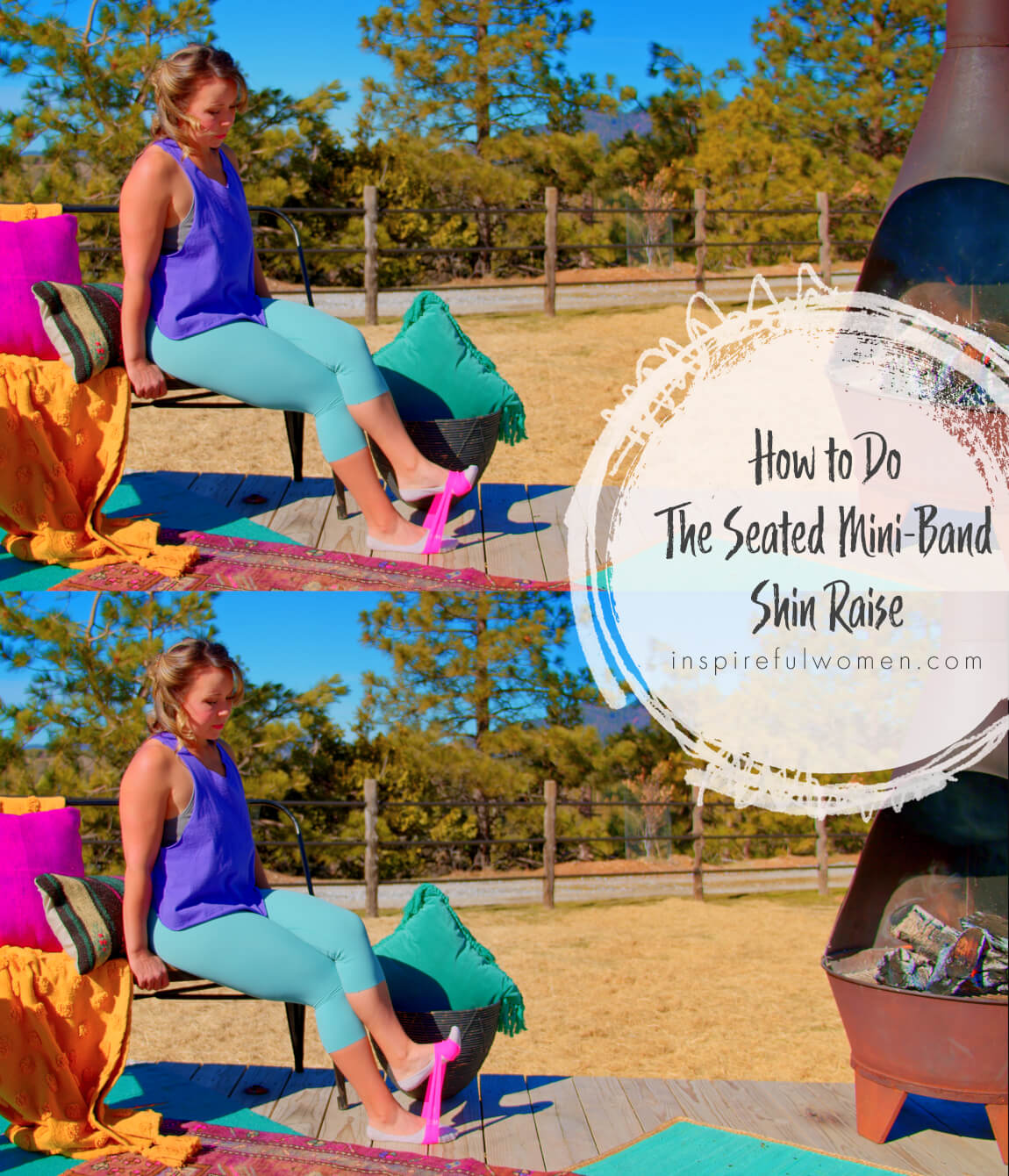
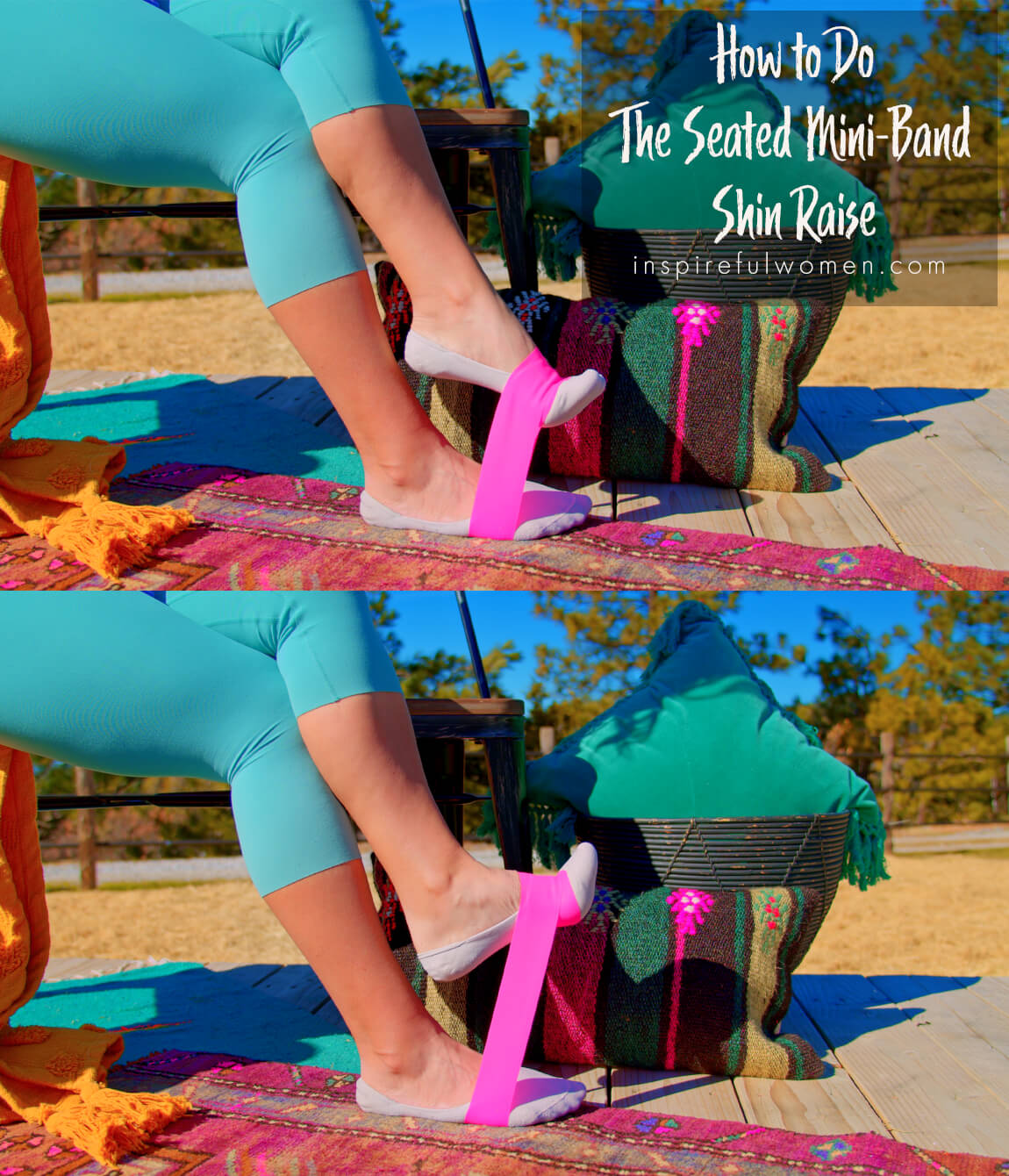

COMMON MISTAKES
COMMON MISTAKES
WHAT TO AVOID WITH THE Seated Mini Band Toe Raise
KEY TIP:
Guess what? Good news! Many avoids are the same for most movements. Once you learn the basics, there's really only a few extra avoids for each individual movement.
1. Avoid Band too light
AVOID: Avoid a light band.
WHAT TO DO:
- You want a strong enough band that doesn't slip around on your foot as you lift.
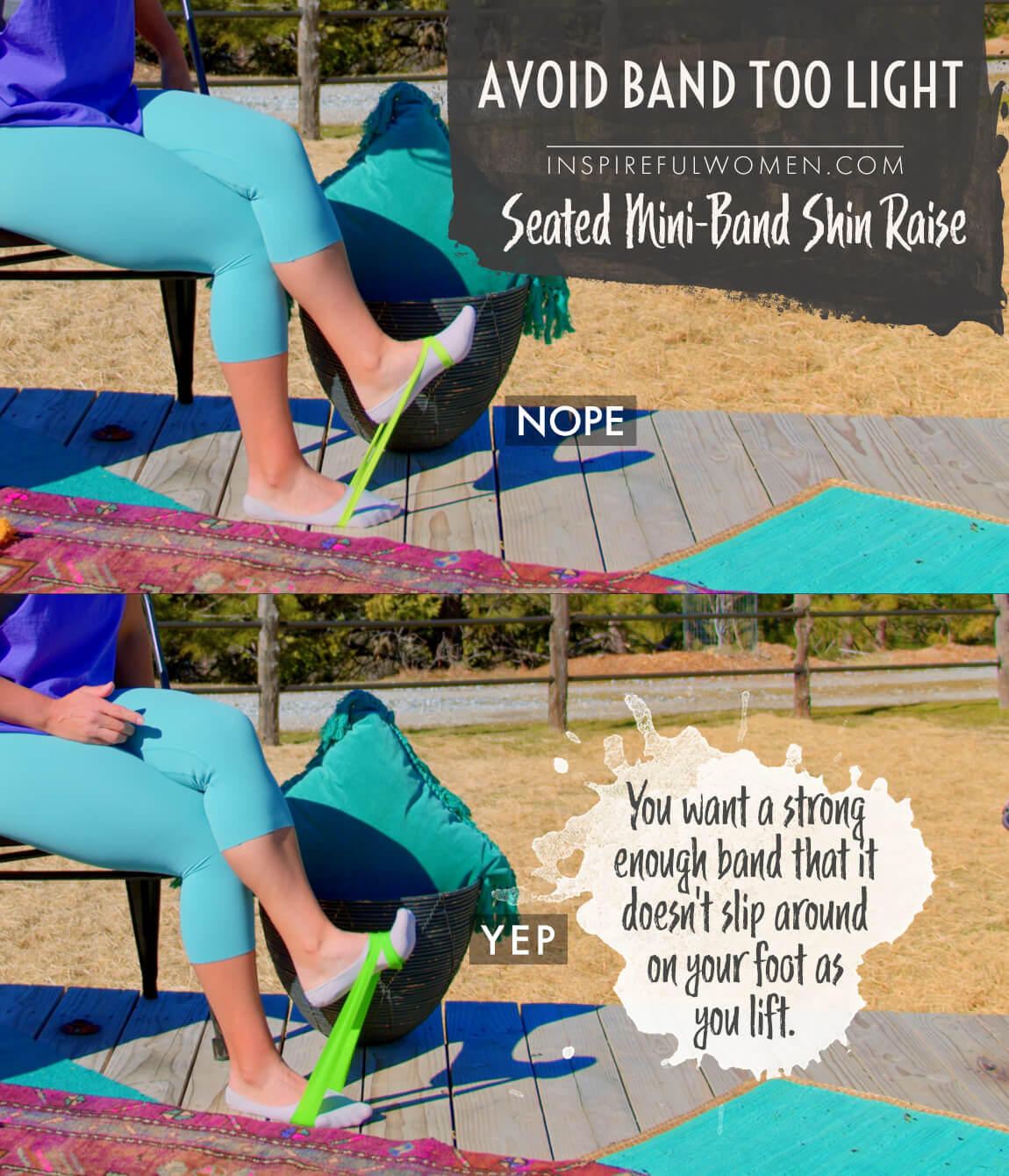
2. Avoid Band too loose
AVOID: Avoid a loose band.
WHAT TO DO:
- Wrap the band around the foot as many times as you need so there is enough tension to be challenging.
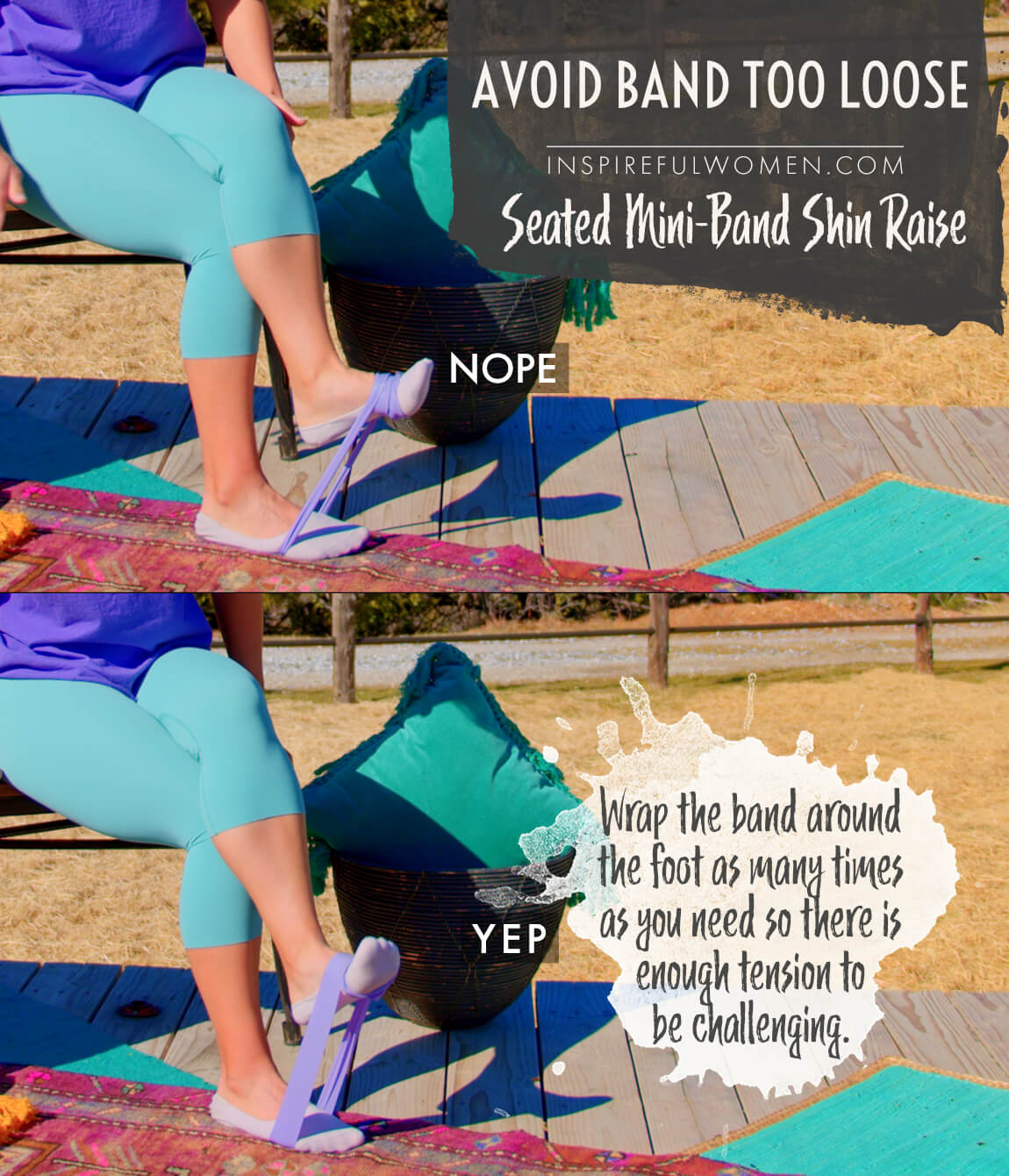
3. Avoid angled Band
AVOID: Avoid angling your band.
WHAT TO DO:
- Try to keep a vertical path for the band with the way you position your feet.
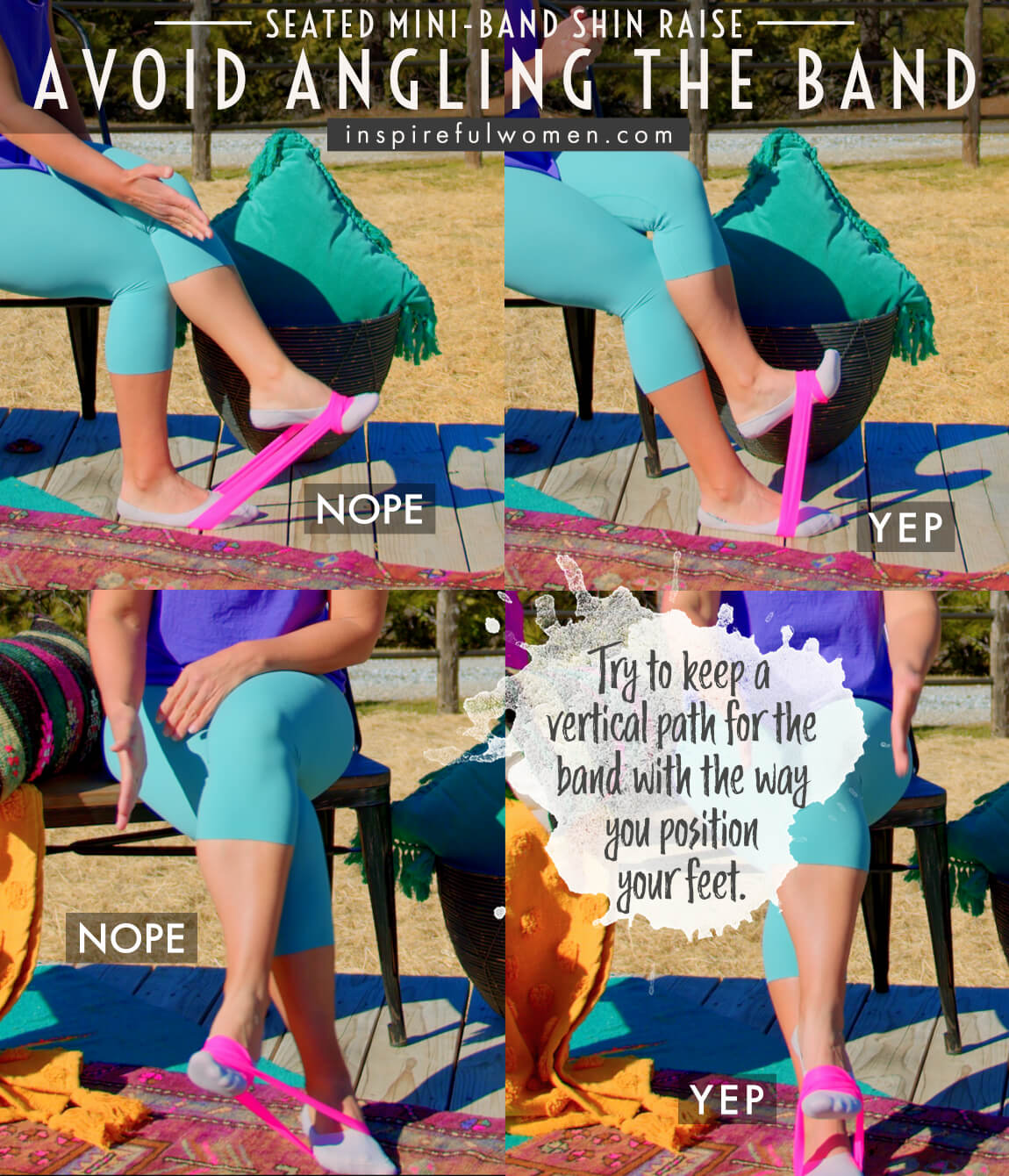
4. Avoid foot angled in or out
AVOID: Avoid lifting your foot outwards or inwards
WHAT TO DO:
- Lift your foot straight up, and think of your second toe heading toward the middle of your shin.
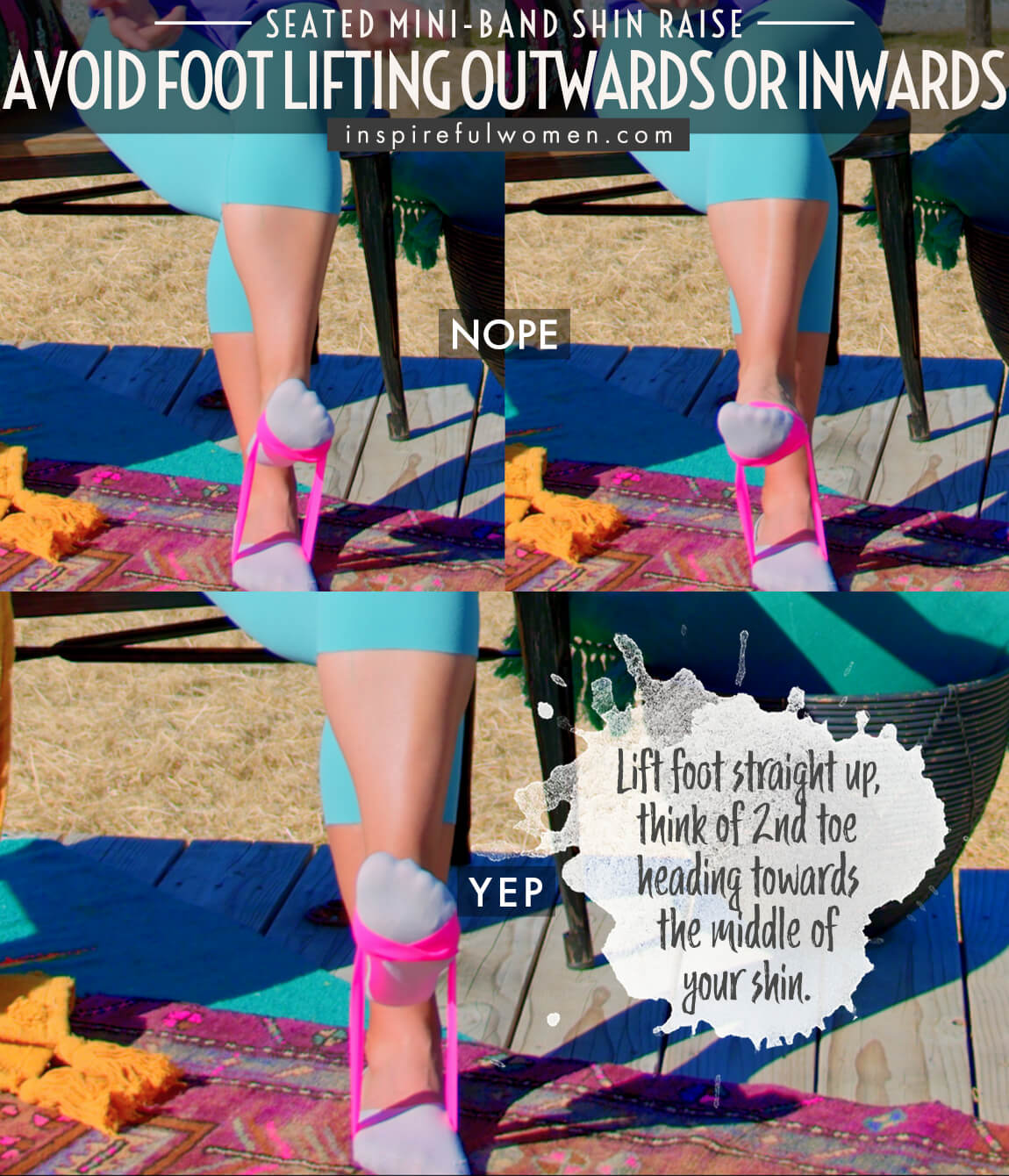
5. Avoid Band restricting toes
AVOID: Avoid letting the band restrict your toes.
WHAT TO DO:
- Try to wrap the band around your working foot as close to the tip of your foot that still allows you to lift your toes up.
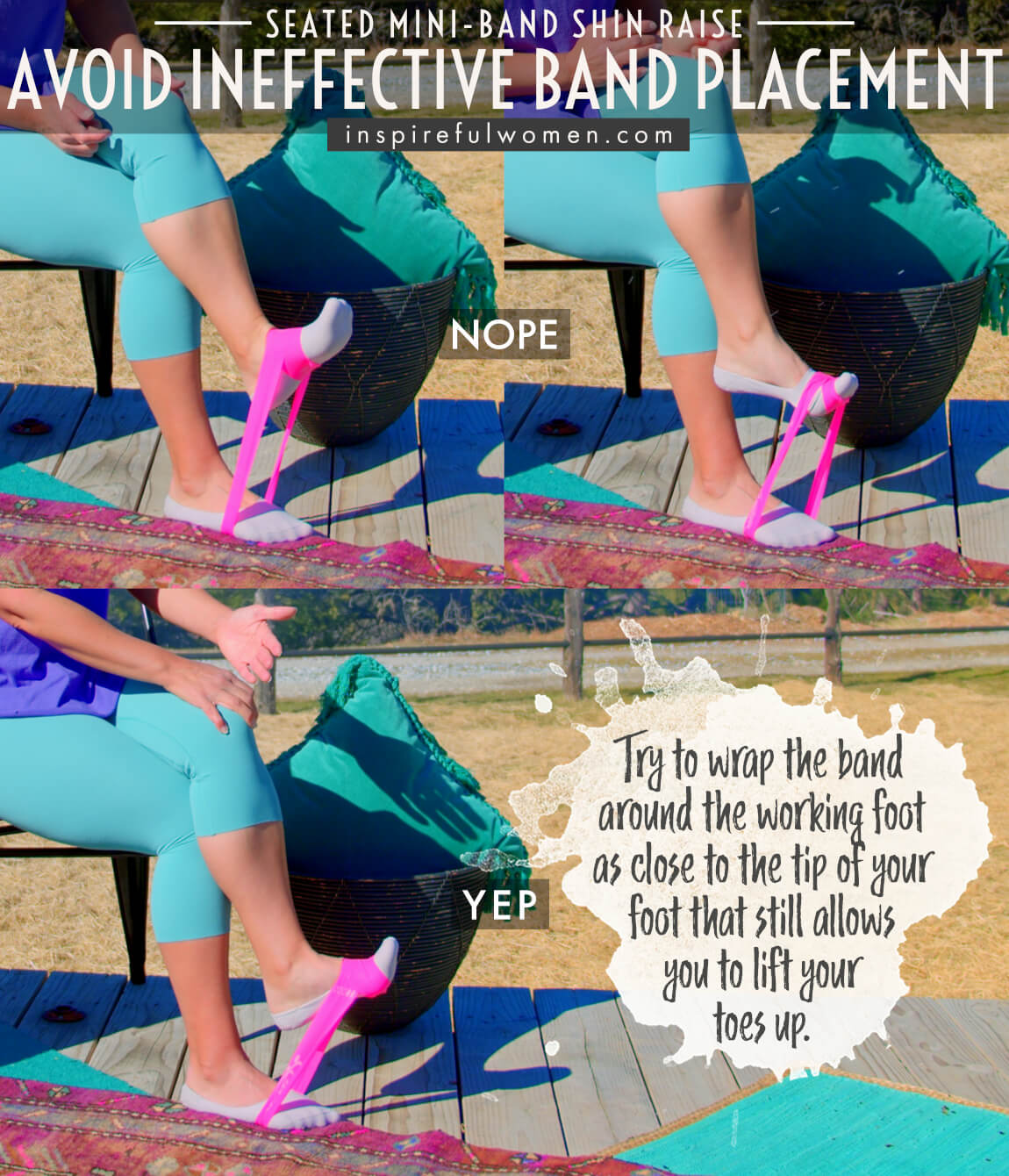
WHAT WE'RE DOING TODAY
WHAT & WHY
BENEFITS OF TRAINING THE tibialis Anterior
WHAT
IMPROVE ANKLE MOBILITY & STRENGTH
We’re working our shins today and you might wonder, hmmmm…... I wonder why we’re working out our shins - I mean when you look at them, it doesn’t seem like there’s much more than bone right there, just waiting to hurt a lot when we accidentally ram into something. There are muscles in this area though and the main one is called the tibialis anterior - that’s a terrible name, we should really give it a nickname like “Tibby” that’s much cuter.
Our shin muscles bend the ankle to lift the top of the foot towards the shin. They also pull the toes up. The movement to work these muscles is very simple, just lifting the foot up and lowering it back down. The muscles on the front of the lower leg are frequently overlooked in exercise programs. These muscles play an important role in control over the ankle for balance and stability in quiet standing and when we move. They also help to move and position the foot and ankle to absorb shock and transfer forces all the way up the leg.
The shin muscles work at a low level during walking and stepping up. When you take a step forward during walking you must lift (dorsiflex) the top of the foot and toes up to clear the floor as the leg passes under the body. When the leg moves forward the heel lands on the floor first. The shin muscles control the lowering of the foot so that it doesn’t “slap” down to the floor. The tibialis anterior works to decelerate or put the brakes on the foot as gravity pulls the front of the foot down. In general, these muscles are used for long periods of time at a lower level. The muscles help to absorb shock and maintain posture and balance while standing still and walking. It is beneficial to train these muscles in this way. The focus of these exercises is lifting the foot, holding the position, lowering slowly, and doing many reps.
WHY BOTHER DOING IT?
WHY
WHY DO WE EVEN CARE?
LOWER LEG MUSCLES TO MATCH OUR UPPER LEG MUSCLES
Most people focus their lower body strengthening program on the muscles that they can see, the bigger muscles like the quadriceps and gluteus maximus. These are very important muscles but the muscles of the lower leg are equally important. It is true that the lower leg muscles are involved in exercises like squats and lunges, but it is also true that you should include some exercises specifically designed to target the muscles of the lower leg to really work them.
AGING GIVES US WEAKER LOWER LEG & ANKLE JOINTS
With age, the muscles of the lower leg get weaker and the ankle joint gets stiffer. The cause and effect probably vary from one person to the next - but the bottom line is that each one of these factors will definitely affect the others. If the muscles are weak, they are less capable of moving the joints through their full range of motion. When the joint range of motion is limited, the muscles won’t be worked through the full range of motion and the movement will become weaker. So basically there is a progressive decrease in strength and range of motion, one limitation feeding off of the other. These changes affect how you move.
STOP TRIPPING ON STUFF
When the tibialis anterior is weak it cannot lift the front of the foot and the toes up as well for walking and stepping over things, this can lead to tripping and even falling. Weak tibialis anterior muscles can increase the risk of falls and contribute to poor balance. The tibialis anterior is important for maintaining and moving the arch to absorb shock as we walk and run and to keep the foot, ankle, knee, hip, and even spine in proper alignment. The feet are often considered the roots of the body, they are our connection to the ground. They are responsible for transferring the forces from the ground all the way up with every step you take. Keeping the muscles and joints of the feet and ankles healthy can help the whole body stay healthy and injury free.
The good news is that if you do the right exercises, you can slow or prevent these changes. One of the best things about adding lower leg exercises is that you develop an awareness of the muscles and how your feet, ankles, and lower leg move during simple daily activities.
EVERYDAY LIFE
EVERYDAY LIFE &
MUSCLE FUNCTION
HOW WE USE OUR tibialis anterior IN EVERYDAY LIFE
1. THE SHIN MUSCLES PULL THE TOP OF THE FOOT UP (DORSIFLEXION)
- Walking, running
- Holds the foot up to clear the ground as it passes under the body
- Controls the movement of the foot when the heel strikes the ground and the toes lower down to a flat foot position (prevents the foot from “slapping” or dropping down)
- Lifting the toes
- Stepping over objects - like the side of a tub or into a high car
- Lifting the toes off of the gas pedal while keeping the heel on the floor
2. WORKS WITH THE OTHER MUSCLES OF THE LOWER LEG FOR BALANCE AND ANKLE JOINT STABILITY
- Standing
- All upright activity
3. HELPS TO SUPPORT AND MOVE THE ARCH OF THE FOOT
- Absorbs shock during walking and running
- Healthy positioning and moving of the foot and ankle to protect the foot, ankle, knee, hip, and low back from uneven stresses that result in degenerative changes or injury
HOW TO FEEL WHAT MUSCLE IS WORKING
How to Feel What Muscle is Working
Sit in a chair with the knee bent and the foot flat on the floor. Bend forward and place your hand on your shin about 6 inches down from the knee, a little bit towards the outside of the lower leg - but still on the front of the leg.
You should be able to feel the shin bone that lies close to the surface on the front of the lower leg. The tibialis anterior attaches just outside of the bony ridge.
Lift the toes and front of the foot off of the floor. You should feel the tibialis anterior muscle contract under your hand.
SCIENCY STUFF
SCIENCY STUFF
SPIFFILICIOUS FACTS ABOUT MUSCLES & MOVES
The “ankle joint” is actually made up of many different joints, it is a very complex structure made up of many bones and ligaments. All of the muscles of the ankle and foot cross more than one joint. Slight changes in the position of the foot can change the action of the muscles.
The tibialis anterior originates on the lateral side of the front of the tibia and inserts onto one of the smaller bones between the ankle and the foot (medial cuneiform), and the base of the first metatarsal - the long bone that runs along the top inside of the foot. The main actions of the tibialis anterior are to dorsiflex and invert the foot. It also plays a big role in supporting and moving the medial longitudinal arch of the foot.
During walking, the tibialis anterior works both eccentrically and concentrically. When the back leg is lifted to come forward, the tibialis anterior works concentrically to lift the front of the foot and toes have to lift up so that the foot can clear the ground as the leg passes under the body. Once the heel touches down in front of the body, the tibialis anterior works eccentrically to decelerate the front of the foot as it is lowered back down to the floor.
Muscles that also contribute to ankle dorsiflexion and lifting the toes up (extension) are the extensor digitorum longus and the extensor hallucis longus. The peroneus tertius can help to dorsiflex the ankle.
ALLLL MUSCLES & WHEN
ALL MUSCLES WORKING & WHEN DURING THE Seated Mini Band Toe Raise
The tibialis anterior, extensor digitorum longus, extensor hallucis longus, and peroneus tertius contract concentrically to dorsiflex the ankle. The same muscles work isometrically to hold the position at the top of the movement.
The tibialis anterior, extensor digitorum longus, extensor hallucis longus, and peroneus tertius contract eccentrically to lower the forefoot back down to neutral.
PIN IT FOR LATER!
